Stay updated with the latest OCI Application Performance Monitoring (APM) enhancements! APM continuously evolves with new features to make your application monitoring easier, faster, and more efficient.
Span Enrichment functionality enhances the analytics process
Span enrichment can drastically enhance spans. Our latest features help enhance custom attributes or edit existing ones, making them more meaningful when analyzing your application. For example, a Span Enrichment rule can be created to modify the behavior of an existing attribute and show a meaningful error message as a value, instead of an error ID.
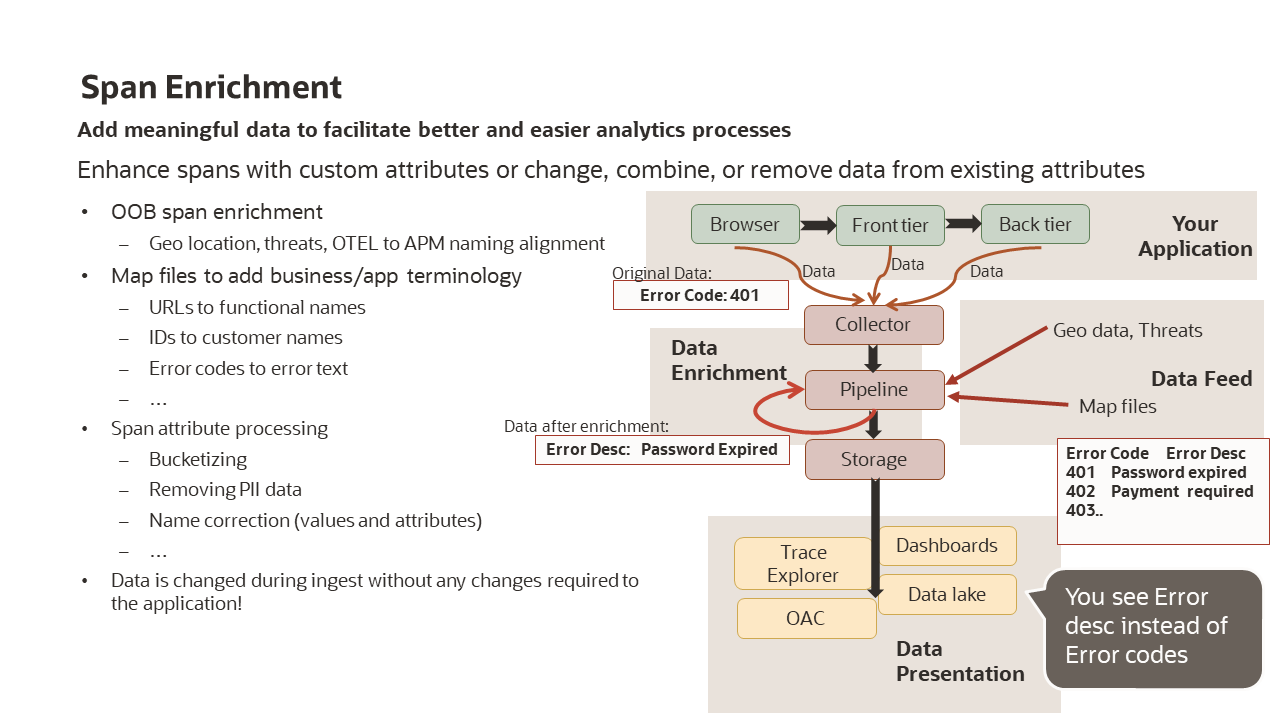
Auto-injection of APM Java agent in Kubernetes
The OpenTelemetry operator for the Kubernetes feature now automatically injects the APM Java agent into Kubernetes once configured. While we already have a few methods to achieve this, this feature offers a quicker and easier way to deploy the Java agent in a Kubernetes environment. Refer to the blog, Automatically deploy an APM Java agent in Kubernetes Environments using the OpenTelemetry Operator for more details.
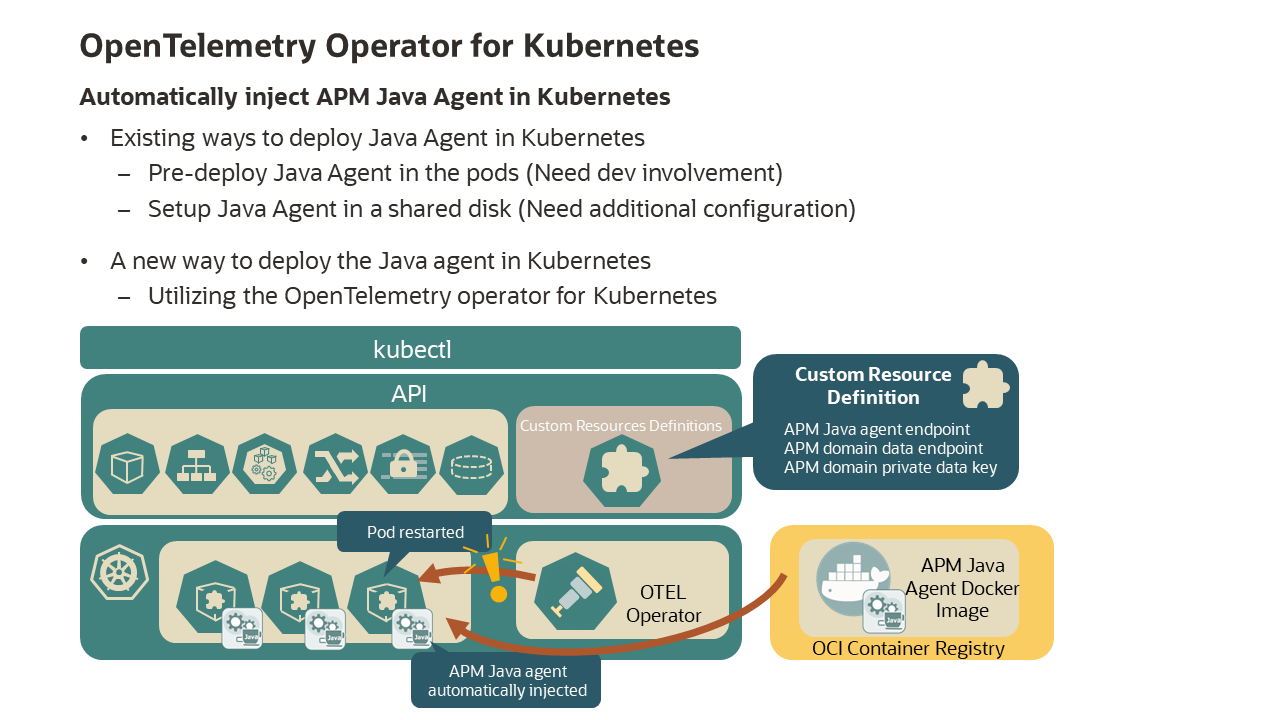
Support of Nested Query in TQL aids in complex query retrieval from another query
There are enhancements in the Trace Query Language (TQL) that aid in retrieving complex queries from another query. The Nested Query feature allows you to construct complex queries using subquery functionality in TQL. The result of one query can be used to retrieve information in another query.
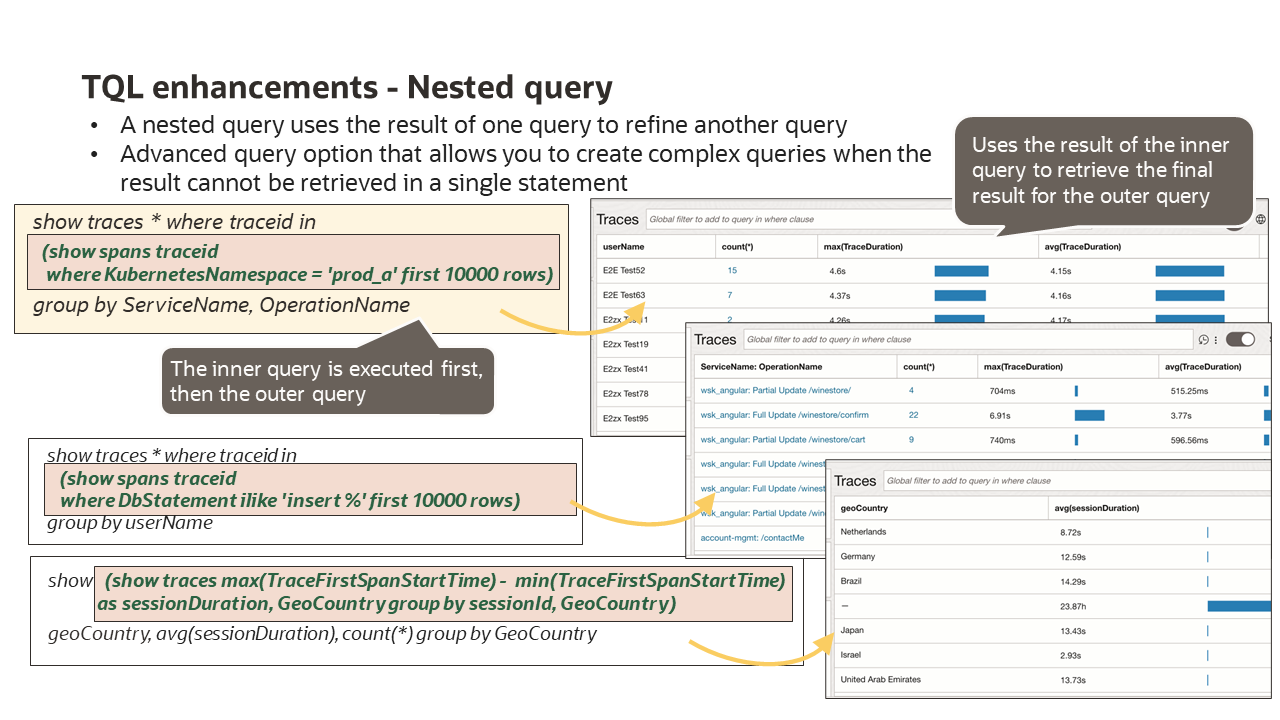
Support of Clustering in TQL to create clusters from traces and identify outliers
Cluster-By command in TQL allows a cluster to be created from the traces and identify outliers. The results can be displayed in a grid view or a bubble chart widget on a dashboard.
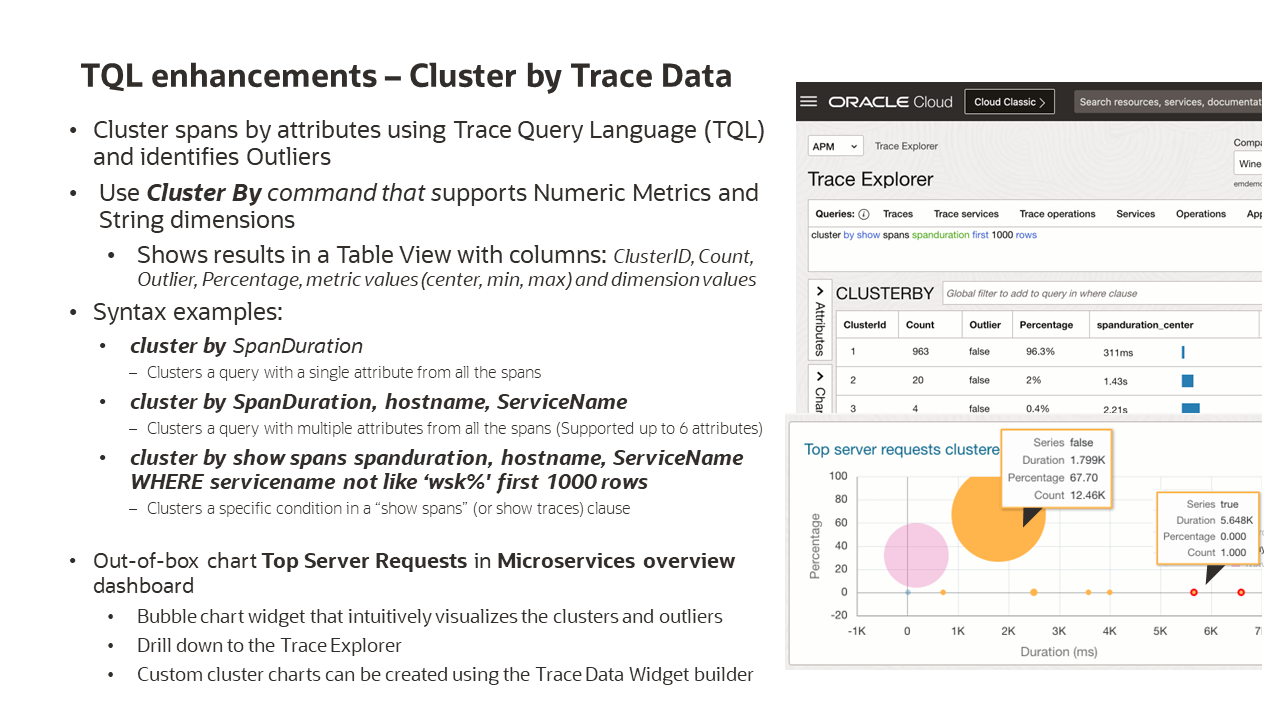
Trace Data Widget builder in APM Dashboards makes creating dashboards intuitive
The new Trace Data Widget Builder allows the transfer of trace queries by copying and pasting them from the Trace Explorer to the dashboard creation page. This makes creating dashboards much easier and more intuitive.
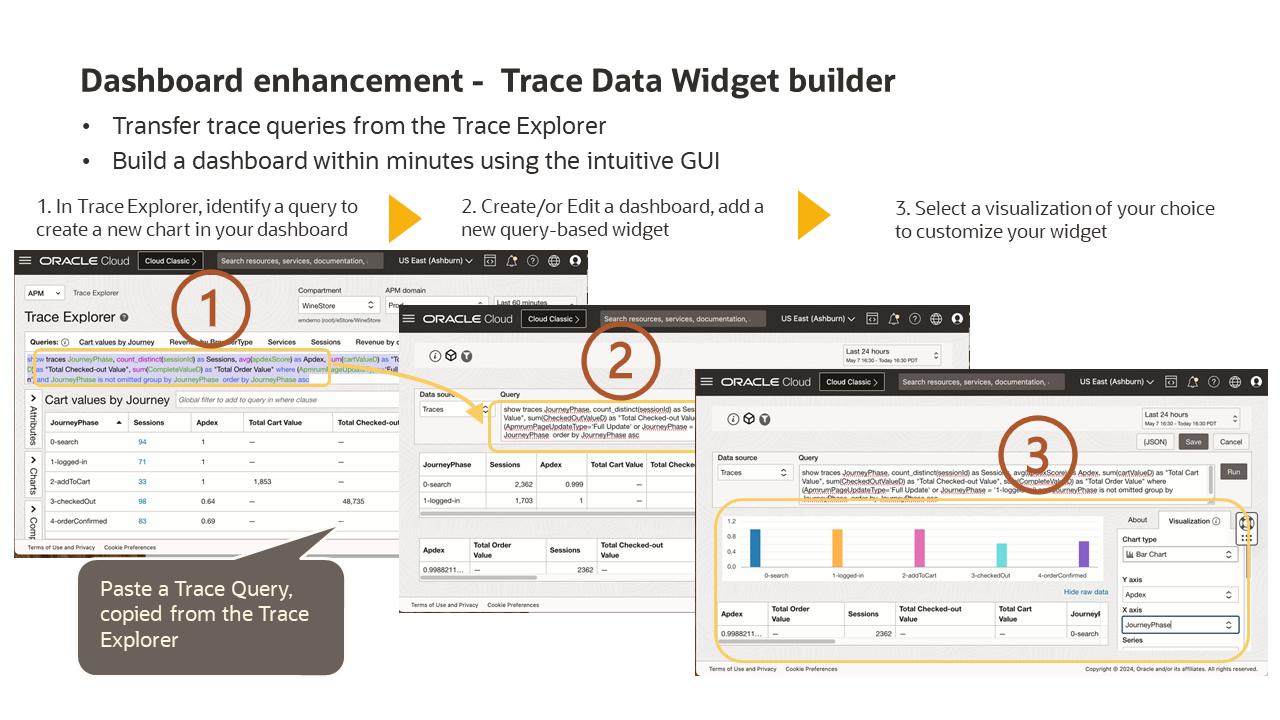
Threat activity monitoring validates activities against the Threat Intelligence database to monitor malicious activity
Threat activity monitoring, which is integrated with the OCI Threat Intelligence Service, allows the monitoring of potentially malicious client activities in your applications. How it works – When APM collects client IPs from user activities, it validates them against the Threat Intelligence database to check for matches with existing threat information. Refer to the blog, Application Threat Activity Monitoring with OCI APM and Threat Intelligence Services for more details.
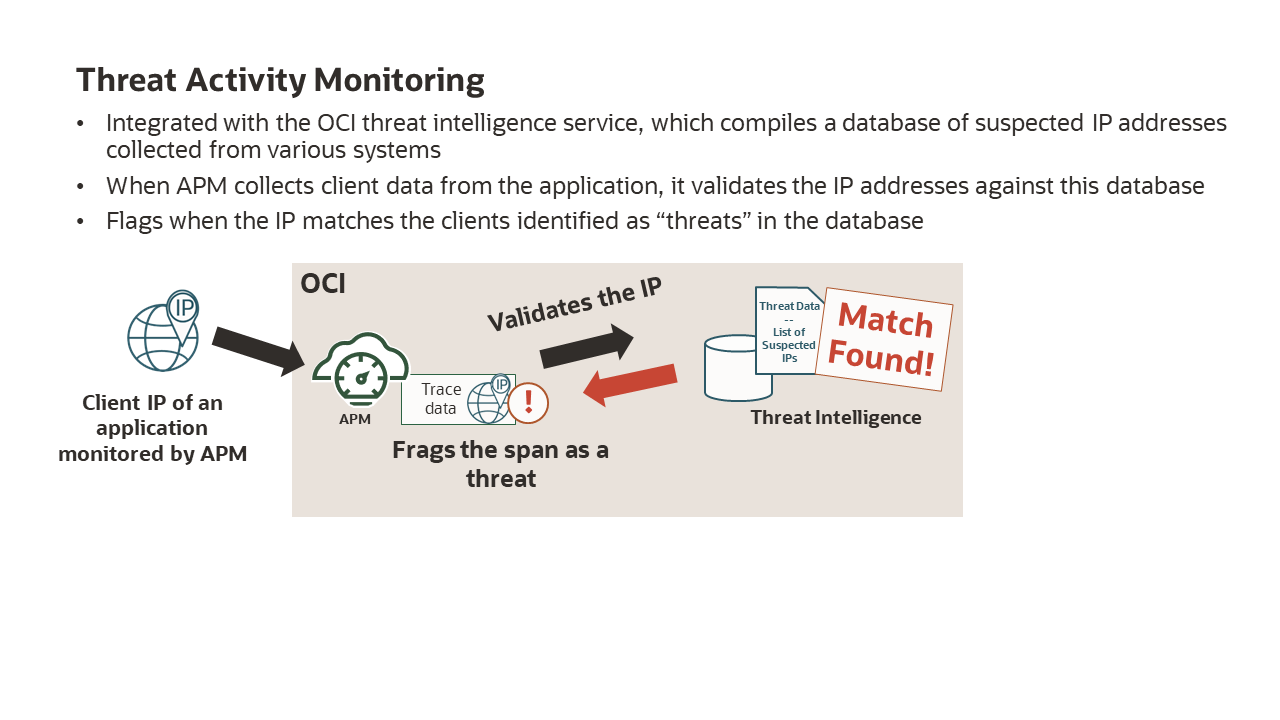
On-premise Vantage Point for Synthetic Monitors
There are three enhancements in synthetic monitoring.
1) On-premise Vantage Point (OPVP) is a new type of vantage point. It is designed to be deployed on Any location, either on your On-premise data center or other Cloud vendors, and securely run synthetic monitors within secured networks.
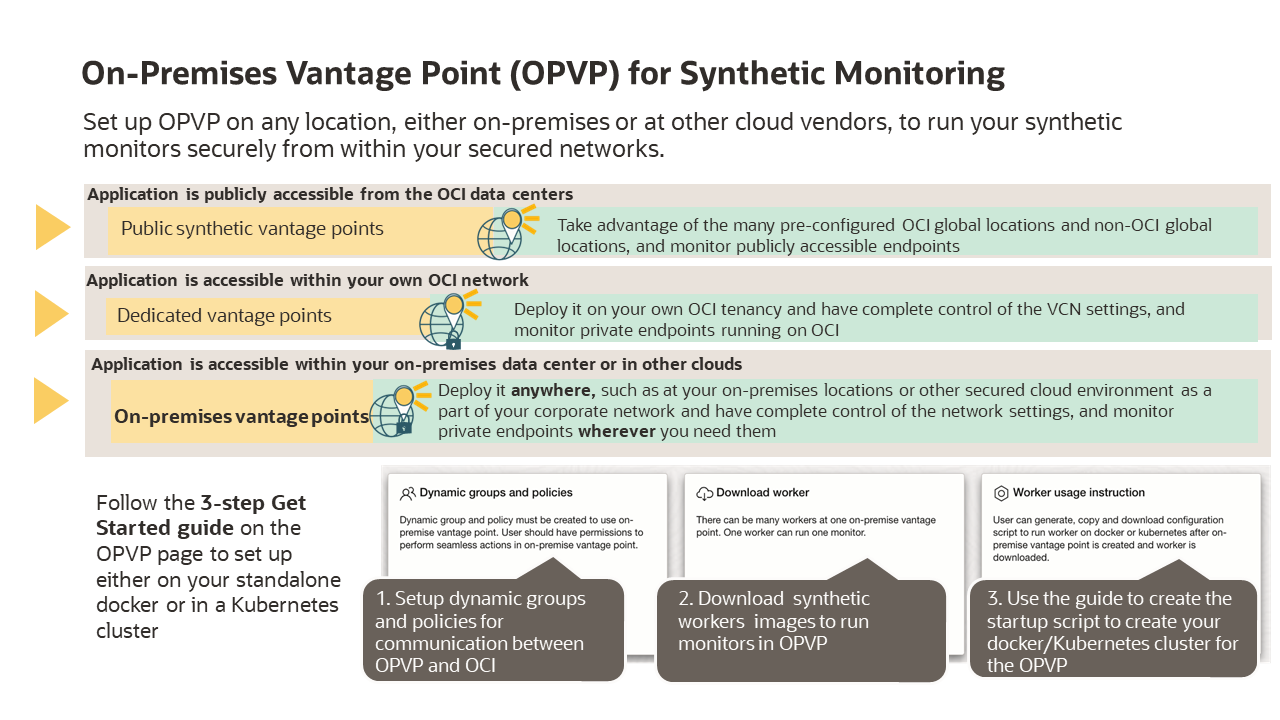
Synthetic DNS Monitor tests the availability of DNS servers
2) The synthetic DNS monitor is a new synthetic monitor type that tests the availability of DNS servers.
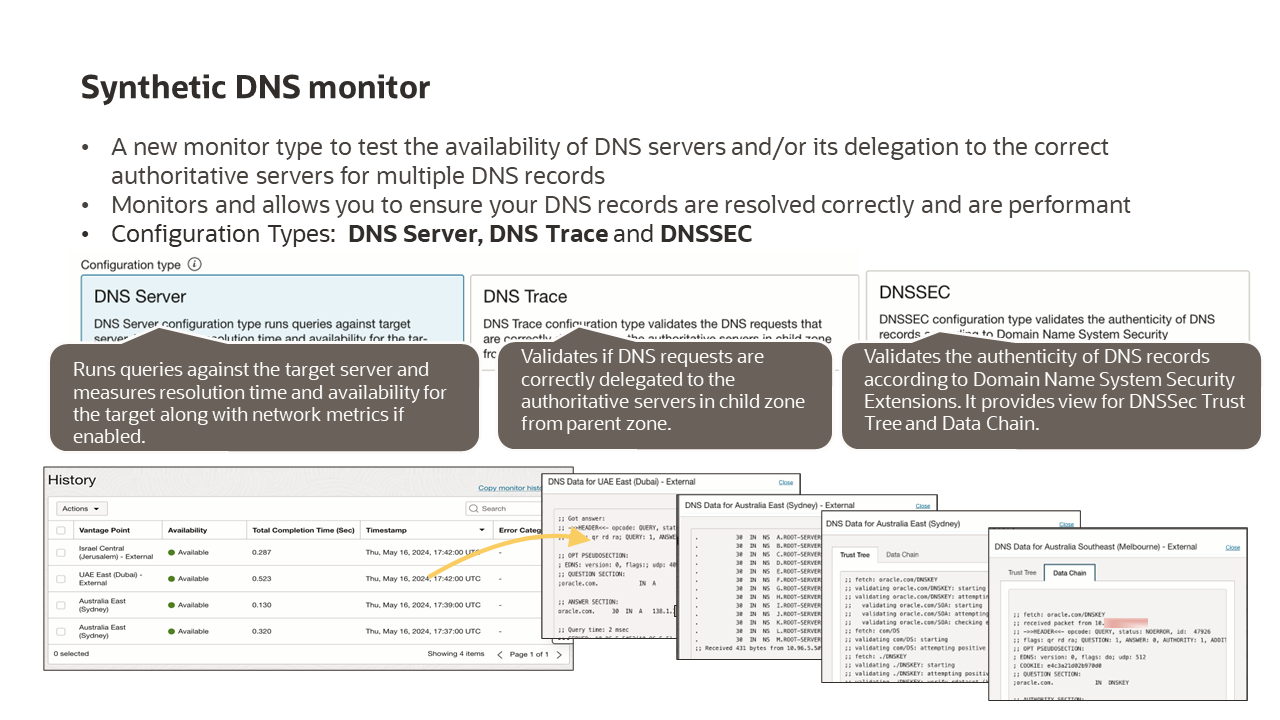
Synthetic Network Data Explorer visualizes end-to-end data path by comparing setups
3) Network Data Explorer is a topology diagram that visualizes the end-to-end network data path for synthetic monitor runs and allows you to run analytics on the latency and packet loss by comparing the different setups.
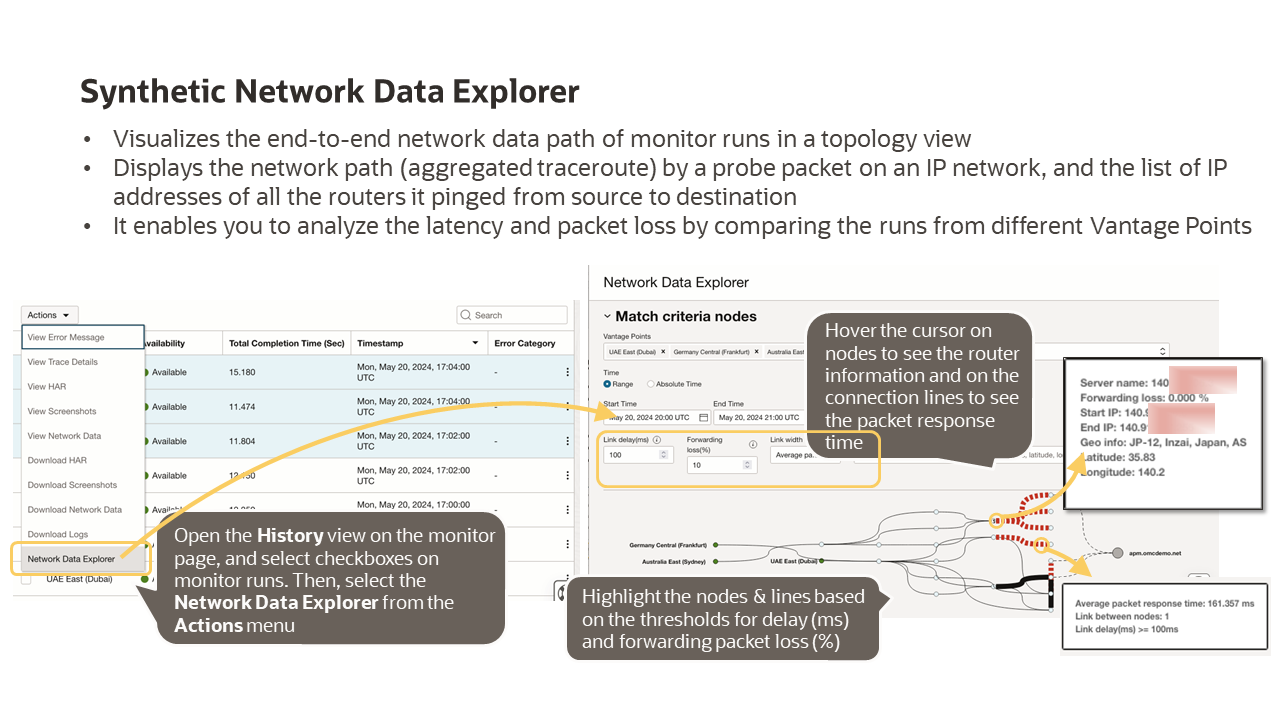
For more information, watch the 30-minute video below that covers the new feature updates for the OCI Application Performance Monitoring Service, as of May 2024: Oracle Cloud APM feature updates, May 2024
Although this update is for May 2024, it includes features released in the past few months. Refer to our release notes page for more details on the release timings.
Resources
